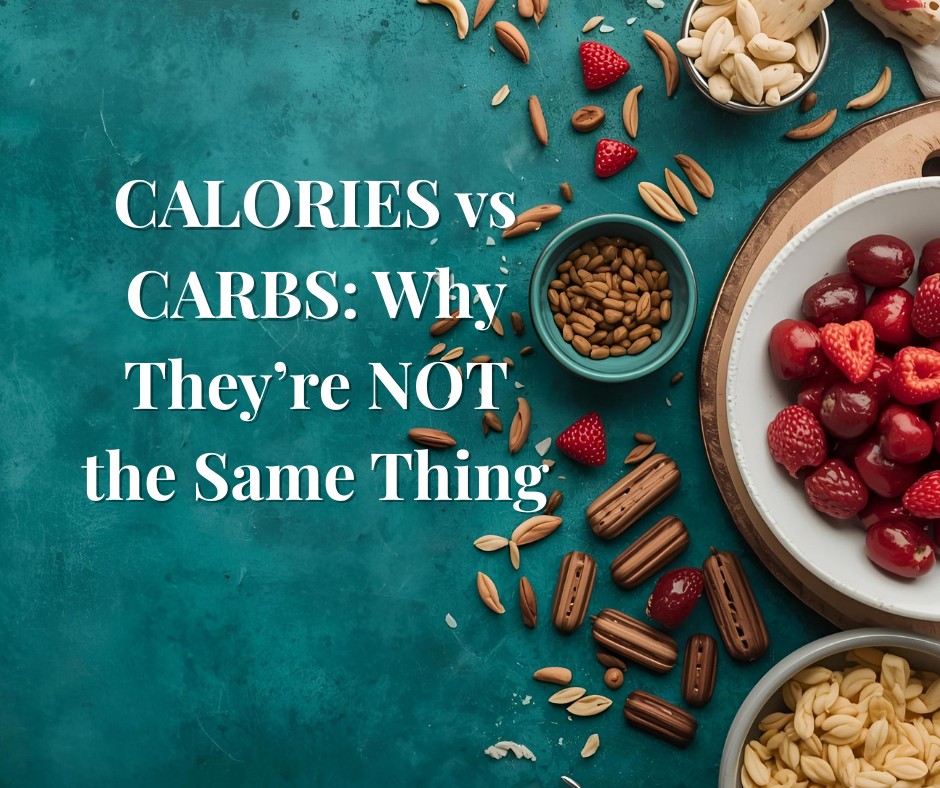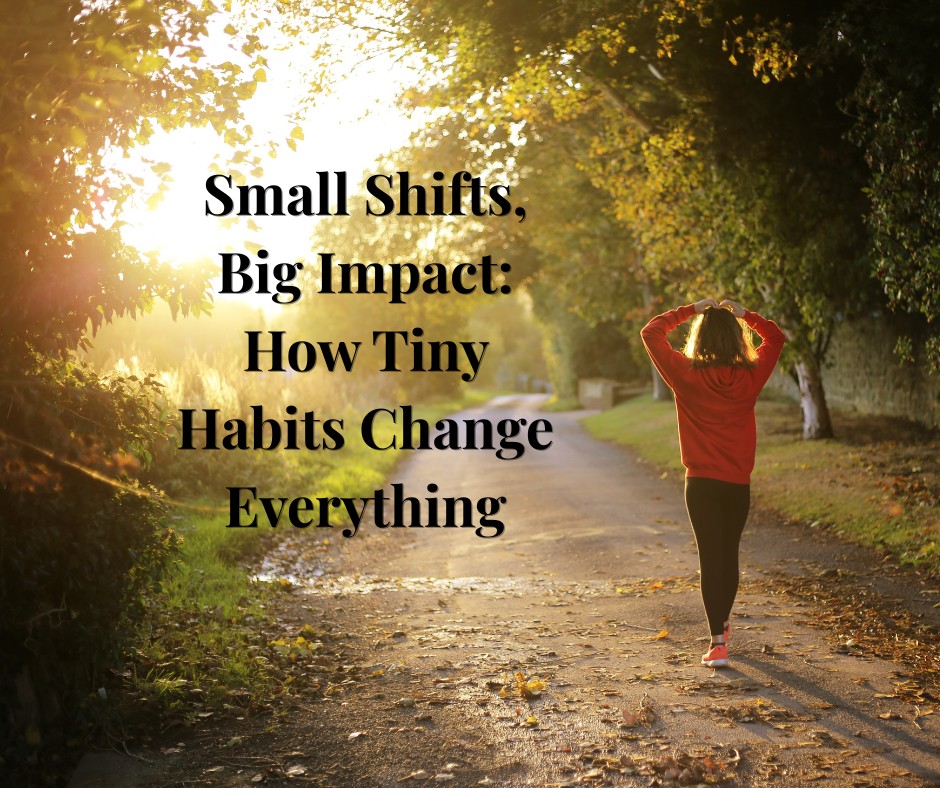
We often think of energy as a willpower issue.
If I just pushed harder…
If I was more disciplined…
If I had more motivation…
But what if your lack of energy isn’t a personal failure — what if it’s a cellular signal?
Your energy comes from your cells.
Literally.
Inside every cell in your body, you have these tiny structures called mitochondria — often called the “powerhouses” of the cell. These are what generate energy for everything your body does: thinking, breathing, healing, hormone balancing, digestion, sleep, mood… all of it.
When your mitochondria are functioning well, you function well.
When they aren’t, you may feel:
- Brain fog
- Low energy or motivation
- Anxiety, mood swings, or trouble sleeping
- Sluggish metabolism or weight gain
- Chronic symptoms that don’t go away
- Blood sugar crashes
- Hormonal imbalances
- And more…
Metabolic health isn’t just about weight.
It’s about how well your cells can create and use energy.
That’s why I believe so strongly in taking a root-cause approach — supporting our cellular health rather than chasing symptom after symptom.
One of the best books I’ve read recently is Good Energy by Dr. Casey Means. It connects the dots between how modern life — with its stress, processed food, poor sleep, light exposure, and chemicals — disrupts your mitochondria and creates the chronic symptoms we normalize.
Healing doesn’t mean adding more.
It often means subtracting what’s making us sick in the first place.
✨ A Few Daily Shifts That Can Improve Energy at the Root:
- Start your day with natural light. Go outside within 30 minutes of waking. This helps your circadian rhythm, hormones, and sleep quality.
- Eat protein + fiber first. Then carbs. This keeps your blood sugar stable, reducing crashes and cravings.
- Walk for 10 minutes after meals. Movement helps your body use glucose properly and supports mitochondrial health.
- Use low-toxin products. The air in your home and what you put on your skin affects your hormones and energy.
- Sleep in a cool, dark room. Your mitochondria restore during rest. Poor sleep = poor energy.
- Pause stress, even for 5 minutes. Your cells need space to repair — not just go, go, go.
🌱 Want to Start Making Changes?
Here’s what I use:
🧼 For cleaning products:
I use this home kit from Young Living — simple swaps that make a big difference. Or try making your own with natural ingredients. Our skin is the largest organ and absorbs those toxic chemicals from cleaning products!
I use this home kit from Young Living — simple swaps that make a big difference. Or try making your own with natural ingredients. Our skin is the largest organ and absorbs those toxic chemicals from cleaning products!
🧬 For metabolic support:
This protocol is what helped me regulate blood sugar, reduce symptoms, and get my energy back — naturally.
This protocol is what helped me regulate blood sugar, reduce symptoms, and get my energy back — naturally.
Small Shifts → Big Energy
You don’t have to do everything at once.
But starting somewhere matters.
But starting somewhere matters.
Your symptoms aren’t random. They’re signals.
Your energy isn’t broken. It’s speaking.
Your energy isn’t broken. It’s speaking.
And your mitochondria?
They just might be the key to the vitality you've been missing.
They just might be the key to the vitality you've been missing.
Want a daily rhythm to follow or help building your plan?
📥 Hit reply — I’d be happy to share what worked for me.
Rooting for your healing,
Rachel xo
Rachel xo
Love what you read here? Subscribe for updates — your reset starts here.
Follow me on social:

I see it all the time…Women hit a wall in perimenopause or menopause and decide to try a low-carb diet — hoping for more energy, fewer symptoms, and maybe a few pounds gone.
But what happens?
They feel worse.
Tired. Frustrated.
And they start to wonder… “What’s wrong with me?”
Tired. Frustrated.
And they start to wonder… “What’s wrong with me?”
I want to tell you this — it’s not you.
Low-carb can be a powerful tool, but only if it’s done the right way.
Low-carb can be a powerful tool, but only if it’s done the right way.
Let’s break down the 3 biggest mistakes I see women make with low-carb — and how to fix them, so your body can actually thrive.
1. You’re Eating Too Little (Especially Protein)
Here’s the trap:
You cut carbs…and end up cutting everything else too.
Your calories tank. Your meals shrink.
And suddenly your body thinks it's in a famine.
You cut carbs…and end up cutting everything else too.
Your calories tank. Your meals shrink.
And suddenly your body thinks it's in a famine.
🔥 But especially during midlife, your body needs:
- Enough calories to support hormone production
- Enough protein to preserve muscle and stabilize blood sugar
Fix it:
Make protein the priority.
Aim for 25–30g of protein at each meal — think eggs, lean meats, Greek yogurt, protein smoothies, or collagen.
Make protein the priority.
Aim for 25–30g of protein at each meal — think eggs, lean meats, Greek yogurt, protein smoothies, or collagen.
👉 Low-carb doesn’t mean low-nourishment.
2. You Go Too Low, Too Fast — Without Managing Stress
Carbs affect cortisol.
And cortisol affects…pretty much everything else in your body — including belly fat, sleep, anxiety, and insulin sensitivity.
And cortisol affects…pretty much everything else in your body — including belly fat, sleep, anxiety, and insulin sensitivity.
When we suddenly drop carbs in an already stressed body, cortisol often spikes.
And that can backfire fast.
And that can backfire fast.
Fix it:
Take a gentle approach.
Start by reducing refined carbs, not whole foods.
Support your nervous system with movement, rest, and mindful practices.
Try protein + fiber first at meals to slow glucose spikes.
Take a gentle approach.
Start by reducing refined carbs, not whole foods.
Support your nervous system with movement, rest, and mindful practices.
Try protein + fiber first at meals to slow glucose spikes.
💡 Remember: Your nervous system is part of your hormone health.
3. You Forget to Add Fiber + Healthy Fats
Low-carb should still be whole-food focused.
But many low-carb diets end up high in meat and low in the fiber your gut (and hormones) need.
But many low-carb diets end up high in meat and low in the fiber your gut (and hormones) need.
Fiber helps:
- Lower insulin resistance
- Support digestion
- Feed your good gut bacteria
- Reduce estrogen dominance
Fix it:
Load up on non-starchy veggies.
Aim for 6–9 cups a day if you can.
Add healthy fats like avocado, olives, nuts, seeds, and clean oils.
And don’t forget soluble fiber — I personally use a mate + fiber protocol that’s worked wonders for me.
Load up on non-starchy veggies.
Aim for 6–9 cups a day if you can.
Add healthy fats like avocado, olives, nuts, seeds, and clean oils.
And don’t forget soluble fiber — I personally use a mate + fiber protocol that’s worked wonders for me.
⚠️ Bonus Mistake: You Think It’s “All or Nothing”
Health isn’t about being perfect.
And low-carb isn’t a magic switch.
Your body is dynamic — it needs patience, nourishment, and a little bit of grace.
And low-carb isn’t a magic switch.
Your body is dynamic — it needs patience, nourishment, and a little bit of grace.
If you’re trying to feel better in this season, start with small shifts.
Support your stress. Focus on protein and fiber. Eat real food.
And most importantly — listen to your body.
Support your stress. Focus on protein and fiber. Eat real food.
And most importantly — listen to your body.
I’m a nurse, but more than that — I’m a woman who’s walked this road.
I’ve tried the “cut it all out” plans. I’ve battled symptoms I didn’t understand.
And now? I feel better than I have in years.
I’ve tried the “cut it all out” plans. I’ve battled symptoms I didn’t understand.
And now? I feel better than I have in years.
If you’re looking for support that’s not a fad, not a gimmick, and not extreme — let’s talk.
📥 Want to learn more about the natural, science-backed protocol I use to balance blood sugar and reduce perimenopause symptoms?
💬 Send me a message me, you don’t have to do this alone.
And you don’t have to guess.
And you don’t have to guess.
Rooting for you,
Rachel xo
Rachel xo
Love what you read here? Subscribe for updates — your reset starts here.
Follow me on social:
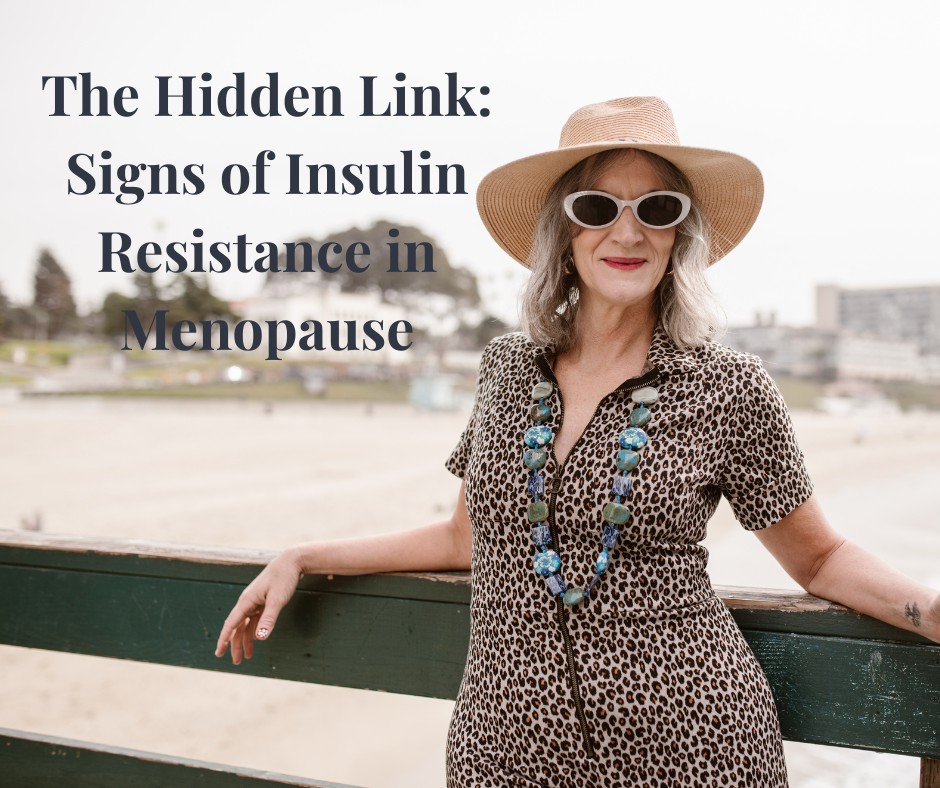
If you’re a woman in midlife and your body suddenly feels like a stranger… you’re not alone.
You’re not crazy. And you’re definitely not broken.
You may just be insulin resistant — and not even know it.
In today’s Rooted Reset, let’s talk about something many women aren’t told in their annual check-ups:
Hormonal shifts in perimenopause and menopause can dramatically increase insulin resistance.
And it affects more than just your blood sugar.
💥 What Does That Actually Mean?
Insulin resistance happens when your cells stop responding effectively to insulin — the hormone that helps your body use glucose for energy.
When that happens, your body produces more insulin just to keep things stable. Over time, that can lead to:
- Fatigue
- Brain fog
- Belly weight gain
- Mood swings
- Cravings (especially for carbs or sugar)
- Skin tags or dark patches of skin
- Trouble sleeping
- Irregular or heavy cycles (in perimenopause)
- And yes… worsened menopause symptoms
😣 Why Midlife Women Are So Vulnerable
During perimenopause and menopause, three major hormonal shifts make insulin resistance more likely:
- Estrogen drops — and estrogen protects insulin sensitivity.
- Cortisol spikes — stress makes your body hold onto fat and crave glucose.
- Sleep quality declines — disrupted sleep messes with blood sugar and appetite hormones.
The result? Your body feels like it’s working against you, even if you haven’t changed anything.
🔄 What Happens When You Reverse Insulin Resistance?
This part is important. When your cells can use insulin again, everything starts to shift:
- You sleep better
- Cravings settle down
- Weight stabilizes
- Energy improves
- Inflammation decreases
- Hormonal symptoms ease (yes — even hot flashes and mood swings)
✨ Personally, I no longer have perimenopause symptoms — and it’s not because of magic.
I started supporting my body with a protocol focused on fiber, mate' and gentle fasting.
My “Mate + Fiber” routine helps my cells function better — and now, so do I.
🚦 What Can You Do?
Start by noticing your own signs. Are you:
- Struggling with stubborn belly weight?
- Waking up tired or wired?
- Feeling foggy or low in motivation?
- Craving carbs or sugar after meals?
- Holding tension in your shoulders or jaw?
Those are signs your body is asking for help — not discipline.
🧠 This Isn’t About Perfection — It’s About Clarity
You don’t need to overhaul your life overnight. But you deserve to understand what’s happening inside your body.
Your symptoms aren’t random. They’re messages.
And the good news is: when you support your body’s biology, everything gets easier.
💛 One Last Thing...
Please don’t ignore how you’re feeling. You are not lazy, dramatic, or “just getting older.”
You’re wise, intuitive — and ready to feel better.
You’re wise, intuitive — and ready to feel better.
If you want to know what helped me finally feel like me again, I’d love to share.
Just hit reply or come join the conversation in our community.
You’re not in this alone.
Rooting for you,
Rachel xo
Love what you read here? Subscribe for updates — your reset starts here.
Follow me on social:
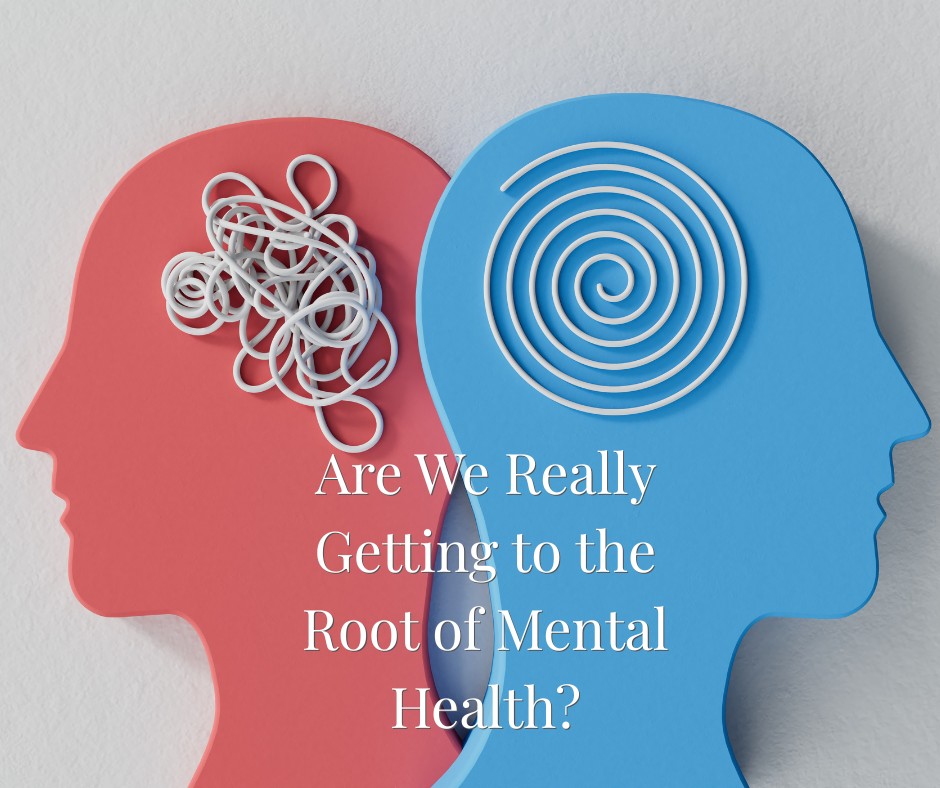
This week’s topic might ruffle some feathers.
But it’s one I think we have to talk about — with honesty, compassion, and curiosity.
Let’s start here:
What if mental health wasn’t just about brain chemistry — but also about brain energy?
What if the way we fuel and care for our body directly impacts our mood, motivation, and mind?
I’m currently reading Brain Energy by Dr. Christopher Palmer, a Harvard psychiatrist who’s spent decades studying the connection between mitochondria (your cells’ energy engines) and mental health.
And friends, it’s blowing my mind — and making so many things click.
❗️ Medication Can Help — But Is It the Whole Story?
To be clear: I’m not anti-medication.
Many people find relief and stability with traditional treatments.
But what I’ve seen — and what I’ve experienced personally — is that sometimes medication is just the beginning, not the full picture.
Many people find relief and stability with traditional treatments.
But what I’ve seen — and what I’ve experienced personally — is that sometimes medication is just the beginning, not the full picture.
When we only treat the symptoms (anxiety, depression, fatigue, brain fog), we may miss the root cause — what’s actually going on at a cellular level.
Dr. Palmer’s work is showing us something powerful:
Mental health challenges often reflect a deeper issue — how our cells are producing and using energy.
And guess what affects that?
Blood sugar, sleep, stress, movement, inflammation, food quality, circadian rhythms — the daily things we overlook or dismiss as “lifestyle.”
🧬 Mitochondria & Mental Health: The Connection
When your mitochondria aren’t functioning well, your brain cells don’t have the energy they need.
That can lead to:
That can lead to:
- Mood instability
- Low motivation
- Trouble focusing
- Burnout
- Anxiety or depressive episodes
- Fatigue that sleep doesn’t fix
And here’s the kicker:
These aren’t just “in your head.”
They’re happening in your cells.
It’s not about willpower. It’s about biology.
These aren’t just “in your head.”
They’re happening in your cells.
It’s not about willpower. It’s about biology.
❤️ So What Can We Do?
Here’s the hope-filled part.
There are small, daily changes that can help support your mental health from the inside out.
There are small, daily changes that can help support your mental health from the inside out.
Things like:
- Prioritizing quality sleep
- Reducing ultra-processed foods
- Eating protein and fiber first, carbs last
- Walking after meals
- Managing stress and nervous system load
- Checking your blood sugar or fasting insulin
- Aligning your habits with your natural circadian rhythm
- Staying hydrated and moving your body gently
- Bringing compassion into your healing — not just “motivation”
These aren’t meant to replace medical care.
They’re meant to complement it — and sometimes unlock new progress when things have plateaued.
🌱 Final Thought: It’s Not Your Fault — But You Can Choose to Heal
If you’ve struggled with your mental health, please hear me:
You are not broken.
You are not lazy.
You are not a failure.
You are not broken.
You are not lazy.
You are not a failure.
You may simply be underpowered — running on a (cellular) empty tank for far too long.
And that’s not your fault. But it is something you can support.
And that’s not your fault. But it is something you can support.
You don’t have to do it perfectly.
You just have to begin paying attention to your body with love.
Because that’s where the real healing starts.
You just have to begin paying attention to your body with love.
Because that’s where the real healing starts.
With you in this,
Rachel xo
Rachel xo
Love what you read here? Subscribe for updates — your reset starts here.
Follow me on social:
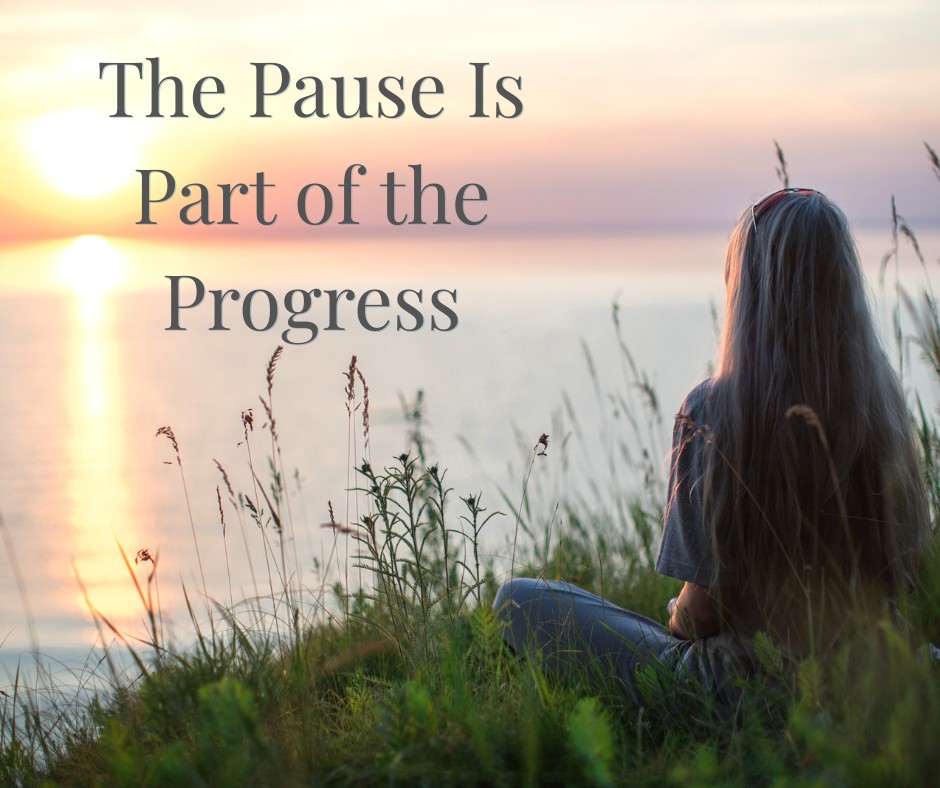
Protecting Your Peace Isn’t Selfish — It’s Self-Care
Let me guess…
You’re tired. But you keep going.
You feel it in your bones that you need a break. But the list is long. The people are counting on you. The guilt creeps in.
You feel it in your bones that you need a break. But the list is long. The people are counting on you. The guilt creeps in.
So instead of slowing down, you keep pushing.
Because somewhere along the way, we were taught:
- Rest means we’re falling behind
- Saying “no” means we’re letting people down
- Pausing means we’re giving up
But what if the truth is the exact opposite?
🧠 Your Nervous System Needs You to Slow Down
Our bodies are incredible — they’re built to help us adapt, push through, and care for others.
But they’re also designed to rest, regulate, and recover.
But they’re also designed to rest, regulate, and recover.
When we’re stuck in stress — even low-level, background stress — our nervous system stays on high alert. And over time, this affects everything:
- Cortisol stays elevated
- Blood sugar becomes harder to manage
- Sleep gets disrupted
- Hormones shift and symptoms worsen
- Cravings, inflammation, and mood swings creep in
It’s not “just stress.”
It’s the foundation of your health.
It’s the foundation of your health.
🪞We Don’t Have to Earn Rest
I’ve had to learn this lesson many times:
You don’t have to reach your breaking point before you give yourself permission to stop.
You don’t have to reach your breaking point before you give yourself permission to stop.
And I see it in so many of the women I talk to.
They’re not “failing.”
They’re exhausted.
From the pressure.
The invisible expectations.
The caregiving.
The push to always keep going, even when their body whispers, “please… not today.”
They’re not “failing.”
They’re exhausted.
From the pressure.
The invisible expectations.
The caregiving.
The push to always keep going, even when their body whispers, “please… not today.”
If that’s you, you’re not alone.
💡 This Week’s Rooted Reset
Here’s your gentle invitation:
Take 5 minutes and ask yourself:
- Where am I feeling stretched too thin right now?
- What’s one thing I can release, postpone, or soften this week — without guilt?
- What does protecting my peace look like today?
It doesn’t have to be a big change.
It just has to be honest.
It just has to be honest.
Maybe it’s going to bed earlier.
Maybe it’s letting yourself say “not today” to something you usually say yes to.
Maybe it’s giving yourself permission to feel tired without needing to fix it.
Maybe it’s letting yourself say “not today” to something you usually say yes to.
Maybe it’s giving yourself permission to feel tired without needing to fix it.
The pause is part of the progress.
Rest is healing.
And your peace matters.
Rest is healing.
And your peace matters.
📥 Want more tools to support your hormones, stress, and energy — naturally?
I’d love to share what helped me feel better than I have in years — especially in the most overwhelming season of my life.
No pressure. No programs. Just real support.
No pressure. No programs. Just real support.
Hit reply — and I’ll share exactly what worked for me.
Rooting for you,
Rachel xo
Rachel xo
Love what you read here? Subscribe for updates — your reset starts here.
Follow me on social:






